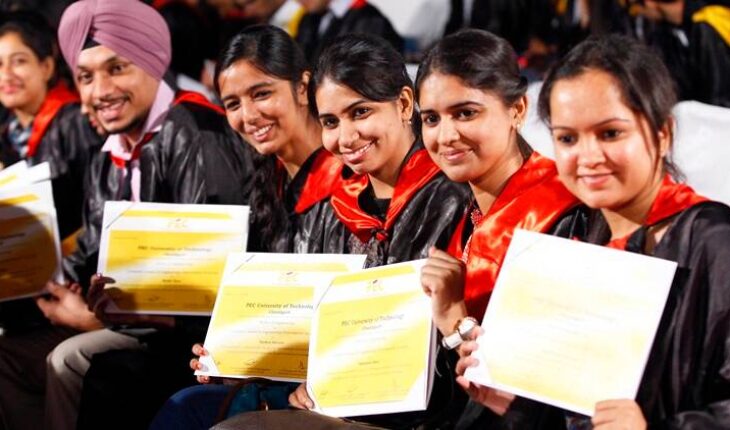
India witnesses almost 5 million students graduating from various academic streams and trade every year. For a country that boasts of the world’s largest youth population aged between 15 and 24, and that’s 238 million of them, the total number of graduates is still not that extraordinary.
India’s youth population is projected to remain the largest in the world until 2030 and is estimated to reach 365 million by then. That would then account for 20 percent of the country’s population.
However, as the country struggles to provide education, employment and business opportunities to this demographic, the need to upskill Indian youth has become yet more pressing and serious than ever.
According to International Labour Organization’s 2020 data, 495 million people were employed in India out of a total population of 1.38 billion. That accounted for just 36 percent of the population with a job.
Adding to the complexity is India’s growing population rate which continues to move upward at 1.1 percent over a five-year period. That puts a cracking pressure on essential resources such as land, water, energy, food and healthcare, and makes searching for a job tougher for the Indian youth than finding an imaginary pot of gold in a barn full of unicorns.
India’s growing rate of unemployment is an emerging cause of concern for the youth as well. According to the World Bank, the pre-covid unemployment rate in India stood at 5.78% in 2019 and per latest CMIE (Centre for Monitoring Indian Economy) data, unemployment in India prevails at 7.8% as of March-end this year.
As with any other global economy Covid-19 destabilized the spine of the Indian economy. India’s GDP contracted by 7.7% and it is estimated that the Asian giant lost between $1.5 to $2 trillion. The country is still trying to revive from the massive setback and the ever-dwindling job opportunities for the youth is a sign that things are not really all that hunky dory.
The question that arises now is how will India’s hundreds of millions of emerging youth survive, what many believe, to be the toughest years ahead?
According to the World Bank, for every 100 people in India in 2020, there were only 34 jobs available. This data included both formal and informal employment across the country.
Add to that the fixation of Indian companies and headhunters to recruit an English-speaking workforce, despite the country legitimately recognizing 21 other official business languages.
As functional and practical as it may be for commercial purposes, only 20 % of Indian youth speak business English, as per British Council’s 2020 data. However, the total number of English speakers in India stands at 125 million people which is 10% of the total population of the country and understandably one of the highest in the world.
Despite the preference for English over any other Indian language, headhunters find it tough to scout for the right talent since many Indian youth lack soft and essential business communication skills in English, a language that is not native to any population group in India.
The inability of million of graduating engineers, architects, marketing, and sales professionals to communicate effectively and proficiently in business English, leaves a huge blackhole in the job market. Just being able to read, write and speak English in a text bookish manner is not good enough for these youth to bring back home a coveted sales or marketing job, especially if they were trained in English skills in rural India or small cities. Corporate organizations and multinationals based out of India want no less than David Attenboroughs and Naomi Kleins to sell their soda cans and electric cars
Finally, the lopsided focus and concentration across many higher academic institutions in India on hardcore technical skills such as engineering and management, and the complete disregard of soft personal and professional communication skills, is a major impediment in the path of employment for Indian youth.
Countless Indian techies, engineers, programmers, developers, coders, proudly show off near perfect technical scores but are afraid to open their mouths during interviews, for fear of being judged due to poor communication skills. In team settings, many are unable to build strong relationships, resolve conflicts with empathy and achieve common goals.
The lack of these intangible yet highly valuable skills, which are in demand by employers have a debilitating impact on the career success of many Indian youth.
For Indian youth to be Work Ready, World Ready, it is imperative that they proactively upskill themselves and given the already existing challenging conditions of the Indian economy, focus more on honing their soft skills along with their hard skills.
And if India as a nation aspires to see its youth in global leadership and business positions, then it’s about time that the country invests its resources and finance heavily and vigorously on upskilling millions of bright Indian youths with essential soft skills, to build the next generation of business leaders. After all, Satya Nadella, Sundar Pichai, Shantanu Narayen and Indira Nooyi are not just top CEOs of global organizations but perhaps some of the most empathetic communicators and storytellers.
Sourav Roy, Professor of Practice, Chitkara University, India views are personal
Sourav.roy@chitkara.edu.in






